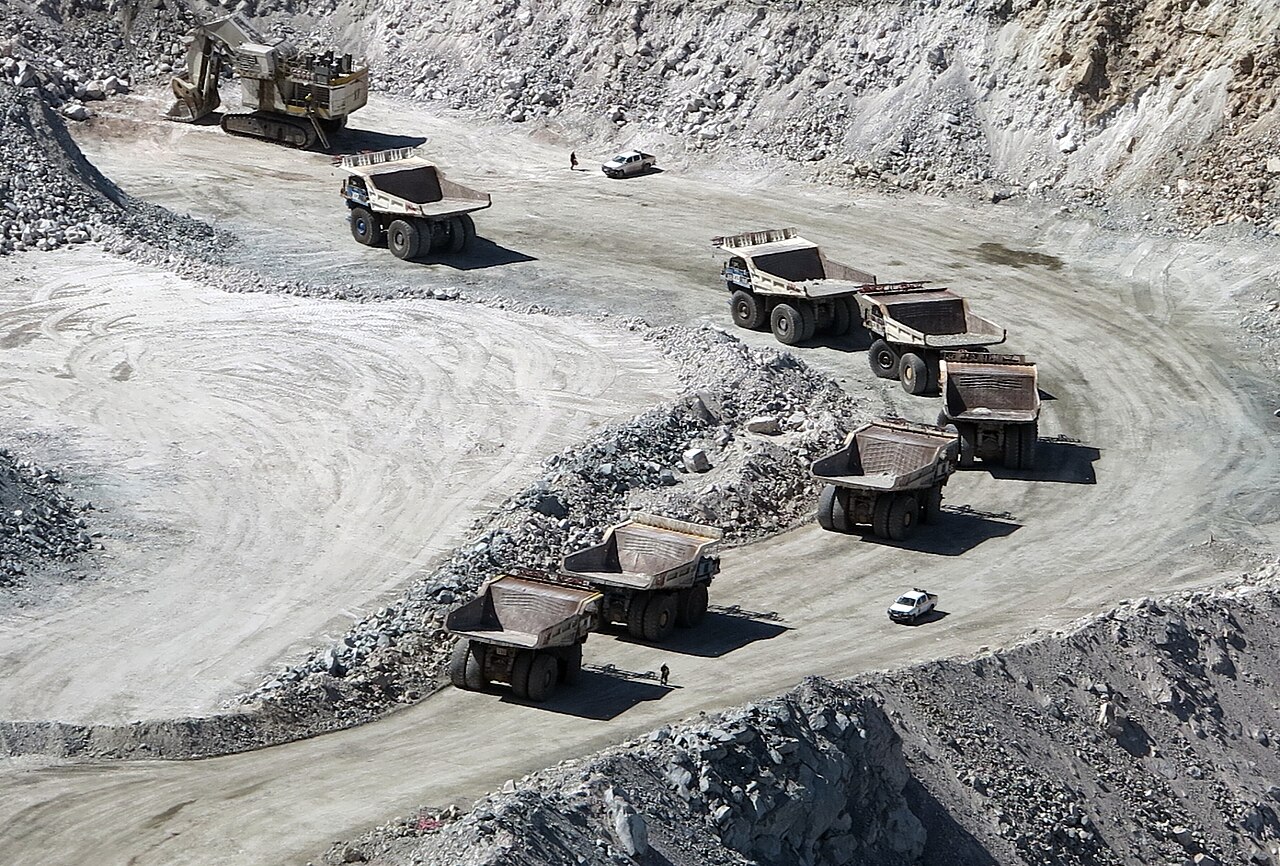North Korea’s Recent Ballistic Missile Launch: Another Foreign Policy Test for Donald Trump
President Donald Trump assessed the state of U.S. foreign affairs during his wide-ranging Thursday press conference: “I just want to let you know, I inherited a mess.” That evaluation appeared to rely, in part, on a quagmire that has dogged successive administrations—the Democratic People’s Republic of Korea (DPRK), or North Korea.
Published by The Lawfare Institute
in Cooperation With

President Donald Trump assessed the state of U.S. foreign affairs during his wide-ranging Thursday press conference: “I just want to let you know, I inherited a mess.” That evaluation appeared to rely, in part, on a quagmire that has dogged successive administrations—the Democratic People’s Republic of Korea (DPRK), or North Korea. Just a few days earlier, on February 12, the Hermit Kingdom had defiantly launched a ballistic missile into the Sea of Japan.
Although the President used the press conference as a vehicle to admonish the media and to deny accusations of wrongdoing related to his administration’s alleged contacts with the Russian Federation, Trump also sought to reassure the American public about North Korea’s bellicosity: “[W]e’ll take care of it, folks.”
The missile test proves that the North Korean threat is growing—the DPRK may soon develop the capability to reach the continental United States with nuclear weapons. Indeed, Pyongyang remains undeterred despite numerous United Nations Security Council Resolutions (UNSCRs), which prohibit the DPRK’s nuclear and ballistic missile programs. This post provides background on the recent launch, pertinent UNSCRs, and North Korea’s current nuclear and missile capabilities.
Launch Details
U.S. Strategic Command (STRATCOM) “detected and tracked what we assess was a North Korean missile launch at 4:55 pm CST, Feb[ruary] 11, 2017,” 7:55 am KST, February 12. STRATCOM assessed the weapon as “a medium- or intermediate-range ballistic missile,” which was fired from “near the northwestern city of Kusong,” and “was tracked over North Korea and into the Sea of Japan.” The weapon traveled approximately 500 kilometers and reached an altitude of 550 kilometers.
The South Korean Joint Chiefs of Staff, which, according to Yonhap News Agency, jointly evaluated the launch with the U.S. military, stated: “The missile appears to be a modified intermediate-range Musudan ballistic missile possibly equipped with a solid fuel engine.” The Musudan is believed to have a range of 2,500 to 4,500 kilometers and a payload capacity of 1,000 to 1,250 kilograms. Assuming the accuracy of the range estimate, the Musudan is capable of impacting Guam. The missile’s performance, however, is spotty—of eight North Korean test flights in 2016, only one was successful.
But some experts, notably John Schilling of 38 North, reject the assessment provided by the South Korean and U.S. militaries. Schilling speculates that the missile is a Pukguksong-2, partly because “the trajectory of this test was not a good match for the Musudan.” The Pukguksong-2 is believed to be a land-based variant of the submarine-launched Pukguksong-1, or KN-11, missile, which Pyongyang successfully launched in August 2016.
Significantly, the Pukguksong-2 has “a much higher degree of mobility, survivability and responsiveness” than other North Korean ballistic missiles, notably the Nodong, says Schilling. First, unlike liquid-fueled weapons, the Pukguksong-2 is powered by solid fuel—thus, the missile does not require fuel trucks and, importantly, the weapon can be fired within five minutes’ notice. By comparison, the logistics-heavy Nodong requires up to an hour of preparation prior to launch. Second, it appears that the DPRK military fired the Pukguksong-2 from a tracked, rather than a wheeled, transporter-erector-launcher vehicle—meaning the missile is more mobile and robust than similar North Korean systems. These improvements, according to Schilling, “make it much harder to find and preemptively destroy the Pukguksong-2.”
U.S. Government and Other Responses
In contrast with the President’s campaign rhetoric regarding North Korea, his response to the launch has been muted. Administration officials notified the President of the missile test while he dined at his Mar-a-Lago compound with Japanese Prime Minister Shinzo Abe. Presumably referring to the missile test, Trump stated: “The United States of America stands behind Japan, its great ally, 100 percent.” In a subsequent joint press conference with Canadian Prime Minister Justin Trudeau, the President observed, “North Korea is a big, big problem and we will deal with that very strongly.” But Trump neither acknowledged the launch nor did he advance a course of action to dissuade the DPRK from conducting additional tests. And during Thursday’s lengthy press conference, the President appeared to mention North Korea only in passing, merely alluding to the launch.
Other U.S. government officials and entities, however, have adopted a more hostile tone towards Pyongyang. The Pentagon, for example, assessed the launch as a “clear, grave threat” to the United States. Nikki Haley, U.S. ambassador to the United Nations, remarked: “It is time to hold North Korea accountable—not with our words, but with our actions.” And on Thursday, Secretary of State Rex Tillerson issued a joint release with his Japanese and South Korean counterparts, which declared: “The Ministers condemned in the strongest terms North Korea’s February 12, 2017 ballistic missile test, noting North Korea’s flagrant disregard for multiple [UNSCRs] that expressly prohibit its ballistic missile and nuclear programs.” The statement also “reiterated that the United States remains steadfast in its defense commitments to its allies, the Republic of Korea and Japan, including the commitment to provide extended deterrence, backed by the full range of its nuclear and conventional defense capabilities.”
Moreover, the U.N. Security Council issued a press release, which stated that the North Korean “launches are in grave violation of the [DPRK’s] international obligations under [UNSCRs] 1718 (2006), 1874 (2009), 2087 (2013), 2094 (2013), 2270 (2016 and 2321 (2016).” Additionally, the Council expressed that its members unanimously “deplore all the [DPRK] missile activities,” and “agreed . . . to closely monitor the situation and take further significant measures.”
Although China, perhaps North Korea’s most stalwart ally, joined the Council’s condemnation of the test, a Chinese Ministry of Foreign Affairs spokesman cautioned: “All sides should exercise restraint and jointly maintain regional peace and security.”
In a significant development, however, China suspended all coal imports from North Korea, Pyongyang’s most lucrative export, until December 31, 2017. And according to the BBC, coal “shipments to China [is] a mainstay of the [DPRK’s] fragile economy.” If successful, the suspension, implemented yesterday, may be a noteworthy diplomatic victory for the Trump administration—like his predecessor, Trump has called on China to restrain North Korea’s nuclear and ballistic missile ambitions. The ban on DPRK coal followed the assassination of Kim Jong-nam, the half brother of North Korean Supreme Leader Kim Jong-un, in Malaysia’s Kuala Lumpur International Airport on Monday, February 13. Pyongyang is widely believed to have carried out the attack—according to The New York Times, “[e]ver since Kim Jong-un succeeded his father in 2011, ‘there has been a standing order’ to assassinate his half brother.”
For its part, North Korea confirmed the launch and alleged that the missile test was successful. CNN reported that North Korea claims the launch was meant to honor former leader Kim Jong-il’s 75th birthday, not to test the international community. In any event, the DPRK ambassador to the United Nations, Han Tae Song, rebuked the Security Council’s condemnation of the event: “The various test fires conducted by DPRK for building up self-defense capabilities are, with no exception, self-defense measures to protect national sovereignty and the safety of the people against direct threats by hostile forces.” More generally, Pyongyang has declared that any sanctions intended on curbing its nuclear or missile programs unlawfully infringe upon its sovereignty.
UNSCRs Prohibiting North Korea’s Missile and Nuclear Programs
Over DPRK protests, the U.N. Security Council has, since 2006, adopted six resolutions that seek to check Pyongyang’s rapidly advancing missile and nuclear programs. In response to a September 9, 2016 nuclear test, the Council unanimously promulgated UNSCR 2321 on November 30, 2016, which ratcheted up a preexisting sanctions regime.
The resolution targeted, among other things, North Korea’s coal-export business in an effort to deny Pyongyang funds for its controversial military programs. In short, the resolution capped “total [coal] exports to all Member States . . . that in the aggregate do not exceed $400,870,018 or 7,500,000 metric tons per year, whichever is lower, beginning January 1, 2017” (para. 26). The resolution also “[r]eaffirms [the Council’s] decisions that the DPRK shall not conduct any further launches that use ballistic missile technology, nuclear tests, or any other provocation . . . and shall abandon all other existing weapons of mass destruction and ballistic missile programme” (para. 2).
It thus appears that China’s temporary moratorium on imports of North Korean coal comports with and may even exceed the baseline established in UNSCR 2321.
The other resolutions provide, in pertinent part:
UNSCR 2270 (March 2016)
- “Reaffirms its decisions that the DPRK shall abandon all nuclear weapons and existing nuclear programmes in a complete, verifiable and irreversible manner, and immediately cease all related activities” (para. 3).
- “Decides that the DPRK shall not supply, sell or transfer . . . coal, iron, and iron ore” (para. 29). This stipulation, however, carved out an exception for “[t]ransactions that are determined to be exclusively for livelihood purposes and unrelated to generating revenue for the DPRK’s nuclear or ballistic missile programmes” (para. 29(b)). UNSCR 2321 closed that loophole by capping Members’ coal imports from North Korea.
UNSCR 2094 (March 2013)
- “Decides that the DPRK shall not conduct any further launches that use ballistic missile technology, nuclear tests or any other provocation” (para. 2).
- “Decides that all Member States shall not provide public financial support for trade with the DPRK . . . where such . . . support could contribute to the DPRK’s nuclear or ballistic missile programmes” (para. 15).
UNSCR 2087 (January 2013)
- “Demands that the DPRK not proceed with any further launches using ballistic missile technology [and] suspend[] all activities related to its ballistic missile programme” (para. 2).
- “Demands that the DPRK immediately . . . abandon all nuclear weapons and existing nuclear programmes in a complete, verifiable and irreversible manner” (para 3).
UNSCR 1874 (June 2009)
- “Demands that the DPRK not conduct any further nuclear test or any launch using ballistic missile technology” (para. 2).
- “Decides that the DPRK shall suspend all activities related to its ballistic missile programme” (para. 3).
UNSCR 1718 (October 2006)
- “Demands that the DPRK not conduct any further nuclear test or a launch of a ballistic missile” (para. 2).
- “Demands . . . that the DPRK return to the Treaty on the Non-Proliferation of Nuclear Weapons and International Atomic Energy Agency . . . safeguards” (para. 4).
- “Decides that the DPRK shall suspend all activities related to its ballistic missile programme” (para. 5).
- “Decides that the DPRK shall abandon all nuclear weapons and existing nuclear programmes in a complete, verifiable and irreversible manner” (para. 6).
Since the adoption of UNSCR 1718, Pyongyang has conducted four nuclear tests in contravention of Security Council prohibitions. (In all, the DPRK has tested five nuclear weapons since 2006.) And despite the successive bans on its ballistic missile program, North Korea launched at least 20 missiles in 2016 alone, according to The New York Times.
President Trump and North Korean Capabilities
According to The Washington Post, the Trump administration is currently reviewing the U.S. government’s North Korea policy. Thus, it is still too early to determine whether President Trump will follow the Obama administration’s “strategic patience” doctrine towards North Korea. And Trump’s restrained response to the February 12 launch might indicate his willingness to pursue a diplomatic course with Pyongyang, possibly through the Six-Party Talks abandoned in 2008. (For details, see the Congressional Research Service report, “North Korea: U.S. Relations, Nuclear Diplomacy, and Internal Situation,” January 15, 2016.) Indeed, Donald Zagoria, Senior Vice President of the National Committee on American Foreign Policy, is organizing talks between the DPRK and former U.S. government officials—dialogue that could be a precursor to formal negotiations between Washington and Pyongyang.
In any event, North Korea has made dramatic strides towards reaching the continental United States with a nuclear weapon. In March 2016, Admiral William Gortney of U.S. Northern Command stated: “It’s the prudent decision on my part to assume that [the DPRK] has the capability to miniaturize a nuclear weapon and put it on an ICBM.” Significantly, in September, Reuters reported that Pyongyang would amass sufficient uranium by year’s end to generate 20 nuclear weapons. Reuters further reported that North Korea had increased its capacity to enrich weapons-grade uranium; Pyongyang now produces enough fuel for six weapons per year.
And recently, on January 1, 2017, Kim Jong-un claimed, “We have reached the final stage in preparations to test-launch an intercontinental ballistic rocket.” Even so, according to North Korean expert Siegfried Hecker, the DPRK’s “ability to field an ICBM fitted with a nuclear warhead capable of reaching the United States is still a long way off—perhaps 5 to 10 years, but likely doable if the program is unconstrained.”





